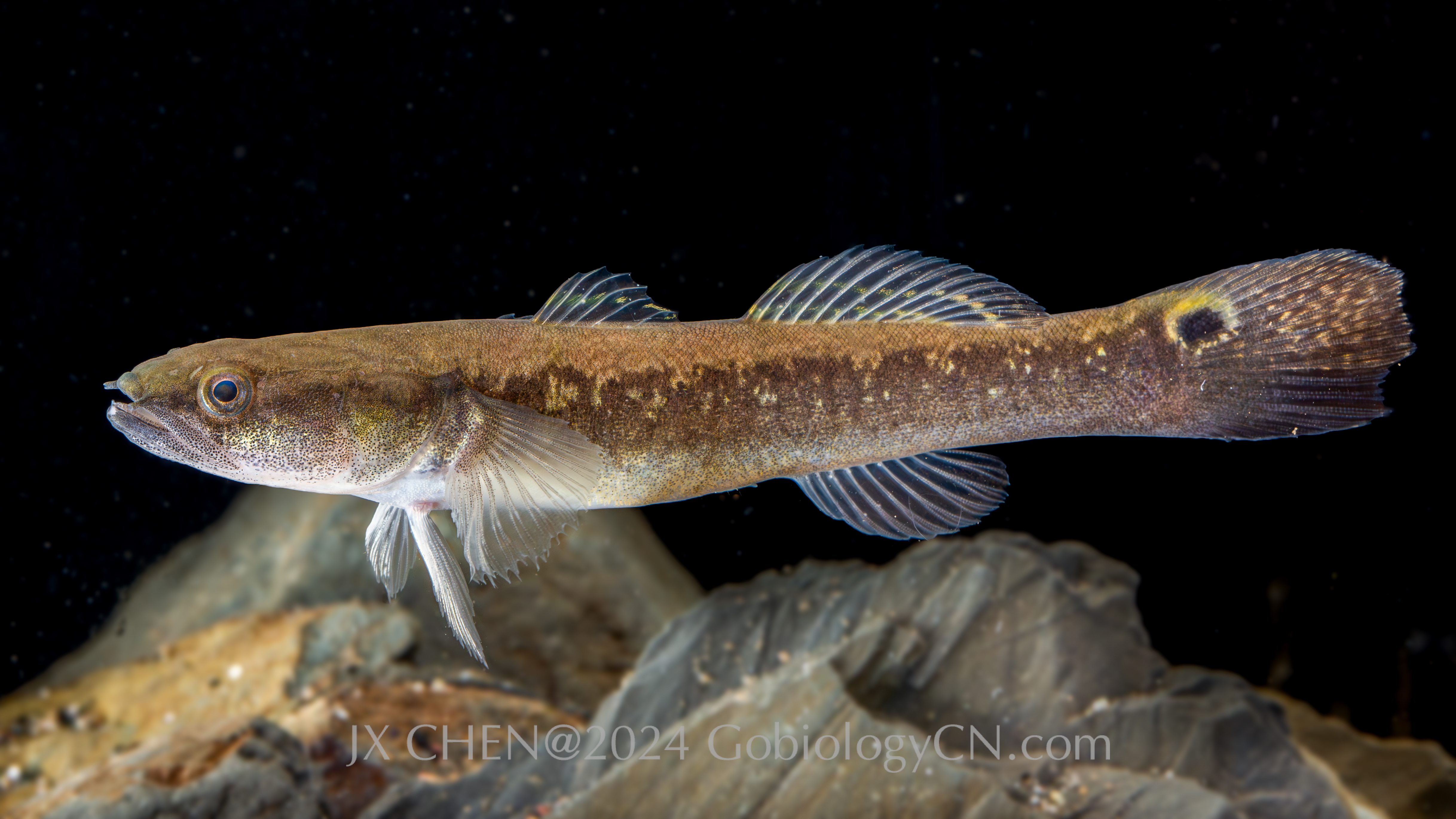Bostrychus sinensis
Chinese common name: 乌塘鳢
Distribution in China: Fujian; Guangdong; Guangxi; Hainan.
国内分布:福建省,广东省,广西壮族自治区,海南省。
Distribution abroad: Unexamined yet, reported in Southern Japan, Pacific Islands south to North Australia if these are truly Bostrychus sinensis.

Live specimen collected in Beihai, Guangxi, China. SL: 100 mm.
采集于广西北海。SL: 100 mm.
This species is prized for its delicious taste and is highly popular among coastal cultures. In regions like Zhejiang and Fujian, it is commonly referred to by the local names "蟳虎" or "蝤蠓虎." The terms "蟳" and "蝤蠓" are colloquial names for mud crabs (Scylla spp.), and "虎" means tiger. There is a belief that this fish preys on mud crabs, posing a threat to crab farming. According to coastal folklore, this fish attracts mud crabs by luring them to attack the eye spot on its tail, and when the crab clamps down on the tail, the fish struggles, detaching the crab’s claw, then turning to feed on the crab. Although modern behavioral ecological studies have debunked the validity of this legend, it still holds significant cultural influence in southern China’s maritime traditional communities.
THis species is previously thought to be widespread in the coastal mudflats of southeastern China, but some molecular phylogenetic studies have revealed that Bostrychus sinensis in the northwestern Pacific is divided into three monophyletic clades. A 2024 study by Zhang et al. split the species in China into two: Bostrychus sinensis, now restricted to the area south of Xiamen, Fujian, and the newly described Bostrychus donghaiensis, found north of Ningde, Fujian.
又名中华乌塘鳢,味美,深受沿海人民的喜爱,在浙江、福建等地有“蟳虎”、“蝤蠓虎”的俗名。“蟳”、“蝤蠓”为青蟹(Scylla spp.)的俗称,人们认为本种会捕食青蟹,危害青蟹的养殖。在沿海传说中,本种会吸引青蟹攻击其尾部眼斑,待其夹住尾鳍后挣扎,将青蟹螯肢卸下,再转头捕食青蟹。现代行为学研究否认了这一传说的合理性,但其在中国南方海洋文化中仍有巨大的影响力。
本种曾被认为是中国东南沿海滩涂广布种,后基于分子系统学研究发现西北太平洋的中华乌塘鳢可分为3个单系,2024年Zhang et al.的一项研究将中国的乌塘鳢拆分为两种,中华乌塘鳢即乌塘鳢分布于福建厦门以南,另一种东海乌塘鳢(Bostrychus donghaiensis)分布于宁德以北。